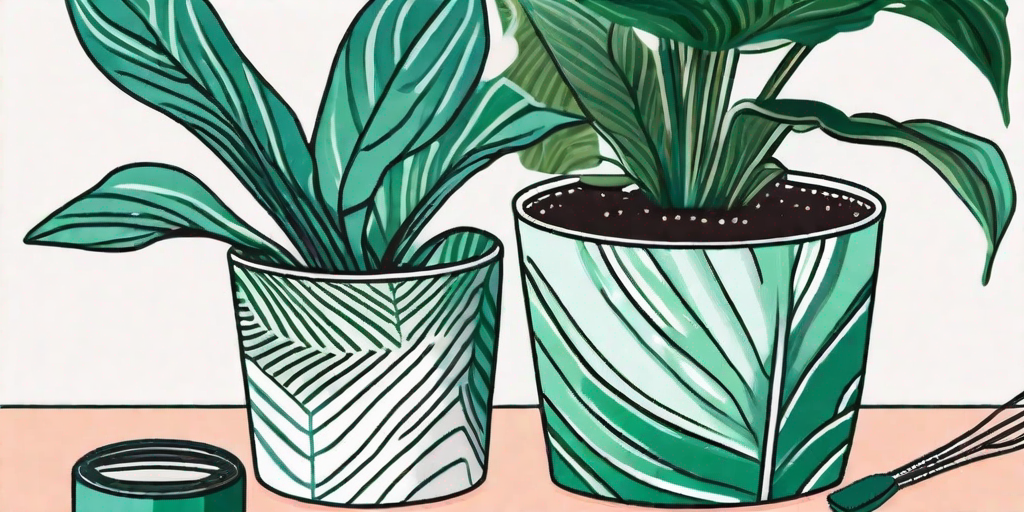
Calathea Maranta, also known as the Prayer Plant, is a tropical beauty that has taken the indoor gardening world by storm. With its striking foliage and easy-care nature, it's no wonder that this plant has become a favourite among green thumbs and plant newbies alike. But how do you care for this stunning houseplant? Fear not, dear reader, for we have all the answers you seek.
Understanding the Calathea Maranta
Before we dive into the nitty-gritty of caring for your Calathea Maranta, let's take a moment to appreciate its beauty. This plant is known for its oval-shaped leaves that are dark green on top and purple underneath. The leaves fold up at night, resembling hands in prayer, hence the name Prayer Plant.
Native to the tropical rainforests of Brazil, the Calathea Maranta thrives in humid, well-lit environments. But don't worry, you don't need to recreate the Amazon rainforest in your living room to keep this plant happy. With a few simple tips and tricks, you can provide the perfect environment for your Calathea Maranta.
The Importance of Humidity
As a tropical plant, the Calathea Maranta loves humidity. Dry air can cause the leaves to curl and brown, which is a big no-no if you want to maintain the plant's stunning appearance. So how do you increase humidity? Simple, you can mist the leaves regularly, place the plant on a tray of pebbles filled with water, or use a humidifier.
Remember, though, that while this plant loves humidity, it doesn't like to sit in water. So make sure the pot has good drainage to prevent waterlogging.
Lighting Conditions
When it comes to lighting, the Calathea Maranta prefers bright, indirect light. Direct sunlight can scorch the leaves, causing them to lose their vibrant colour. So, place your plant near a north or east-facing window, or use a sheer curtain to filter the light from a south or west-facing window.
But what if you live in a cave, or your house just doesn't get a lot of natural light? Don't despair! The Calathea Maranta can tolerate low light conditions, although it may not grow as vigorously. You can also use a grow light to supplement the natural light.
How to Care for Your Calathea Maranta
Now that we've covered the basics, let's get down to the fun part: caring for your Calathea Maranta. Don't worry, it's not as daunting as it sounds. In fact, with a little love and attention, your plant will reward you with its stunning foliage.
First things first, the soil. The Calathea Maranta prefers well-draining soil that is rich in organic matter. You can use a commercial potting mix designed for indoor plants, or make your own by mixing equal parts of peat moss, perlite, and compost.
Watering
Watering is perhaps the most crucial aspect of caring for your Calathea Maranta. This plant likes its soil to be consistently moist, but not waterlogged. A good rule of thumb is to water the plant when the top inch of soil feels dry to the touch.
But remember, the Calathea Maranta is a bit of a drama queen when it comes to watering. Too much water, and the leaves will turn yellow. Too little water, and the leaves will curl and brown. So, it's all about finding that sweet spot in the middle.
Fertilizing
Like any other plant, the Calathea Maranta needs nutrients to grow and thrive. You can feed your plant with a balanced liquid fertilizer every two weeks during the growing season (spring and summer). During the dormant season (fall and winter), you can reduce the frequency to once a month.
But be careful not to over-fertilize your plant, as this can cause the leaves to burn. If you notice the leaf tips turning brown, it might be a sign that you're being a little too generous with the fertilizer.
Common Problems and How to Solve Them
Despite your best efforts, your Calathea Maranta might encounter a few hiccups along the way. But don't panic! Most problems can be easily solved with a little bit of plant TLC.
Brown Leaf Tips
If you notice the tips of your Calathea Maranta's leaves turning brown, it could be due to low humidity or over-fertilization. To solve this problem, increase the humidity around the plant and reduce the amount of fertilizer you're using.
Yellow Leaves
Yellow leaves are usually a sign of overwatering. If you notice this problem, reduce the frequency of watering and make sure the pot has good drainage. If the problem persists, you might need to repot the plant in fresh soil.
FAQs
- Is the Calathea Maranta toxic to pets?
No, the Calathea Maranta is non-toxic to pets. However, it's always a good idea to keep plants out of reach of curious pets.
- How often should I repot my Calathea Maranta?
Generally, you should repot your Calathea Maranta every 1-2 years. However, if the plant is growing vigorously and the roots are coming out of the drainage holes, you might need to repot sooner.
- Why are the leaves of my Calathea Maranta curling?
Curling leaves are usually a sign of low humidity or underwatering. Try increasing the humidity around the plant and watering more frequently.
So there you have it, folks! A comprehensive guide to growing and caring for the stunning Calathea Maranta. With a little bit of love and attention, this tropical beauty will reward you with its striking foliage. So go ahead, unleash the beauty of Calathea Maranta in your home!















